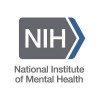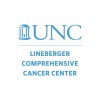
The Effect of Micellized Food Supplements on Health-related Quality of Life in Patients With Post-acute...
Post-acute COVID-19 SyndromeFood supplements like curcumin and boswellia serrata have been used traditionally for anti-inflammatory purposes. A well-known problem of these substances in their natural form is the low bioavailability. Micellization of these substances has been shown to increase the bioavailability significantly and thereby the clinical efficacy. The clinical value of these micellized substances has been presented in numerous clinical studies and in particular in patients with acute COVID-19. This study aims to examine the effect of a mixture of micellized curcumin, boswellia serrata and ascorbic acid on patients with long COVID.

Sucrase-isomaltase Deficiency as a Cause of Irritable Bowel Syndrome
Irritable Bowel SyndromeSucrose Intolerance Due to Sucrase-Isomaltase Deficiency3 moreIrritable bowel syndrome (IBS) is a functional disorder causing troublesome symptoms and reduced quality of life. It affects 10-20% of the population, hence creates large costs for society. About 30-40% of all IBS patients do not benefit from current treatment options. Sucrase-isomaltase (SI) deficiency is an unexplored condition, that may explain symptoms in IBS patients who experience no effect from today's treatments. Currently, a duodenal biopsy is the gold standard for the diagnosis of SI deficiency, however the condition is not well investigated. A 13C-labelled breath test holds promise as a non-invasive alternative, but it has not previously been validated. This project will address the knowledge gap related to a possible association between SI deficiency and IBS by addressing two research questions that have never been answered before. We aim to: Validate the 13C-labelled breath test as a diagnostic tool by assessing the strength of the association between the breath test and SI activity measured in duodenal biopsies Use the 13C-labelled breath test in a randomized dietary crossover trial comparing a starch and sucrose reduced diet (SSRD) with the standard low-FODMAP diet in IBS patients, to evaluate whether SI activity is associated with dietary changes according to symptom severity and gut microbiota composition

Analysis of Frailty Syndrome Within the Framework of the Innovation Fund Project PRÄP-GO (ANA-PRÄP-GO)...
Frailty SyndromeThe patients included in PRÄP-GO and the corresponding comparison cohorts will be offered to participate in this complementary study in order to be able to carry out a detailed characterization and phenotyping of the frailty complex.

Determining the Age of First Acute Coronary Syndrome
Acute Coronary SyndromeAge Problem2 moreThe study aimed to evaluate the association between the obesity grade and the age of the first acute coronary syndrome (ACS). The effect of cardiovascular (CV) risk factors and the age of first ACS in patients with severe obesity was also examined. Consecutive patients with diagnosis of first episode of ACS were prospectively enrolled in 2014 to 2024.Cardiovascular risks of patients will be determined according to clinical and laboratory evaluation and patients were categorized by their body mass indices (BMI). Independent variables that effected the age of first ACS were examined by linear regression analysis

Molecular Mechanisms of Disease Relapse After Allogenic Stem Cell Transplantation in MDS Patients...
Myelodysplastic SyndromesThis is a biological study for adult MDS patients who undergo HSCT procedure. Viable bone marrow samples will be collected and cryopreserved from MDS patients before transplantation and at clinical disease recurrence. CD34+ blast cells at disease relapse after HSCT will be compared with CD34+ cells collected before transplant to study genomic and transcriptomic changes.

An Exercise RCT Targeting African-American Women With Metabolic Syndrome and High Risk for Breast...
Metabolic SyndromeObesityAmong African-American women, in whom metabolic syndrome (MetS) is very prevalent and breast cancer mortality rates are high, it is hypothesized that intervening on MetS to improve the MetS profile may prove to be a means to reduce breast cancer risk. Specific recommendations for breast cancer prevention are now focused on maintaining a healthy weight via increased physical activity levels, and losing weight if overweight or obese. This pilot project compares two exercise interventions: a supervised facility-based and a home-based exercise intervention to a control group in African-American women with metabolic syndrome who are at high risk for breast cancer. This study is a 6-month three-arm RCT to assess the impact of the exercise interventions on biomarkers related to obesity, insulin-related pathways, inflammation, hormones, and micro-RNAs. The specific aim of the proposed study is to compare the impact of a supervised facility-based and a home-based exercise intervention on obesity, metabolic syndrome and known breast cancer biomarkers in postmenopausal African-American women with metabolic syndrome who are at increased risk of breast cancer.

Functional Snack Foods With Safflower Oil and Soy in Postmenopausal Women Having Metabolic Syndrome...
Metabolic SyndromeOverweightThis research study is being done to help researchers develop new dietary options for menopausal women to maintain a healthy weight by developing more nutritious snacks that have health benefits. From this study, the researchers hope to gain understanding on how menopausal women with metabolic syndrome digest and absorb foods with safflower oil on its own and when combined with soy. The research team hypothesize that the two different types of pretzels may be processed by your body differently and that components in the pretzel snacks may be helpful for preventing diseases like obesity and cancer. Safflower oil and soybeans contain many natural chemicals that may benefit human health. However, this relationship is not well understood. This study will look at the impact of the pretzel snacks on your blood fat and glucose levels as well as a group of chemicals found in soy called "isoflavones". Isoflavones are natural chemicals found commonly in soybeans or foods made from them. Participants will be screened to determine if they qualify in meeting the study requirements. Participants cannot have a known allergy to dairy, soy, safflower oil, or wheat protein. Also, participants will be asked to stop eating legumes (beans, peas, soy protein, sprouts and peanuts) and to document the oils they eat for the entire 14 weeks of this study. The study will require five visits to the Ohio State University Clinical Research Center (CRC) which part of the Ohio State University's Center for Clinical and Translational Sciences. Once the investigators have determined that you qualify for this study and you decide to participate, you will be consuming three different pretzels each for one month, starting with a control pretzel. After the control pretzel treatment period, you will be randomly assigned (like the "flip of a coin") to start with one of the two pretzel groups (wheat or soy pretzel with safflower oil) for your first treatment period and then switch to the other safflower oil pretzel at your second treatment period.

Genotype and Phenotype Correlation in Hereditary Thrombotic Thrombocytopenic Purpura (Upshaw-Schulman...
Thrombotic Thrombocytopenic PurpuraCongenital Thrombotic Thrombocytopenic Purpura4 moreHereditary thrombotic thrombocytopenic purpura (Upshaw-Schulman syndrome) is a rare disorder characterized by thrombocytopenia as a result of platelet consumption, microangiopathic hemolytic anemia, occlusion of the microvasculature with von Willebrand factor-platelet-thrombic and ischemic end organ damage. The underlying patho-mechanism is a severe congenital ADAMTS13 (a disintegrin and metalloproteinase with thrombospondin type 1 motif, 13) deficiency which is the result of compound heterozygous or homozygous ADAMTS13 gene mutations. Although considered a monogenic disorder the clinical presentation in Upshaw-Schulman syndrome patients varies considerably without an apparent genotype-phenotype correlation. In 2006 we have initiated a registry for patients with Upshaw-Schulman syndrome and their family members to identify possible triggers of acute bouts of TTP, to document individual clinical courses and treatment requirements as well as possible side effects of long standing plasma substitution, e.g. alloantibody formation or viral infections.

Defining the Brain Phenotype of Children With Williams Syndrome
Williams SyndromeDuplicationBackground: - Little is known about how the brain changes during childhood and adolescence, how genes affect this process, or how the brains of people with 7q11.23 genetic variation change during this period. Researchers are interested in using magnetic resonance imaging to study how the brain changes in healthy children and children with 7q11.23 genetic variation, including Williams syndrome and 7q11.23 duplication syndrome. Objectives: - To study developmental changes in the brains of healthy children and children who have been diagnosed with Williams syndrome,7q11.23 duplication syndrome, or other 7q11.23 genetic variation. Eligibility: Healthy children and adolescents between 5 and 17 years of age. Children and adolescents between 5 and 17 years of age who have been diagnosed with Williams syndrome, 7q11.23 duplication syndrome, or have other 7q11.23 genetic variation. Design: Participants will have a brief physical examination and tests of memory, attention, concentration, and thinking. Parents will be asked about their child s personality, behavior characteristics, and social interaction and communication skills. Both participants and their parents may be asked to complete additional questionnaires or take various tests as required for the study. Participants will have approximately 10 hours of magnetic resonance imaging (MRI) scanning, usually over 4 to 5 days, within a one month period. Some of these tests will require the participants to do specific tasks while inside the MRI scanner. Participants will be asked to return to the National Institutes of Health clinical center to repeat these procedures every 2 years thereafter until age 18.

Tissue, Blood, and Body Fluid Sample Collection From Patients With Hematologic Cancer
Chronic Myeloproliferative DisordersLeukemia6 moreRATIONALE: Collecting and storing samples of tissue, blood, and body fluid from patients with cancer to study in the laboratory may help the study of cancer in the future. PURPOSE: This research study is collecting and storing blood and tissue samples from patients being evaluated for hematologic cancer.
